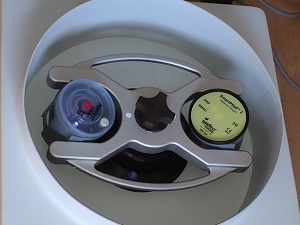 PRP also known as Platelet Rich Plasma can be used to treat impacts and injuries with effective and natural healing results by using samples of the clients’ blood. PRP typically contains more plasma than ordinary blood. To gain this substance red blood cells – which are vital for regrowth and restoration – are separated from all other blood cells from the clients sample and are used to increase concentration using a method called centrifugation.
PRP also known as Platelet Rich Plasma can be used to treat impacts and injuries with effective and natural healing results by using samples of the clients’ blood. PRP typically contains more plasma than ordinary blood. To gain this substance red blood cells – which are vital for regrowth and restoration – are separated from all other blood cells from the clients sample and are used to increase concentration using a method called centrifugation.
The healing and regrowth abilities of PRP have also proved to stimulate, prompt and maximise hair regrowth and restoration as well as wounds and muscular injuries.
What makes PRP different?
PRP is a new and effective non-surgical and natural method of hair restoration for people with severe hair loss difficulties. PRP is considered one of the greatest alternatives to surgery as it is a highly natural approach and actively promotes and encourages natural healing and regrowth. Many practitioners have recognised this as a very safe and reliable procedure with outstanding long-term results accompanied by great recovery periods.
The PRP method
Injections containing PRP are administered to the subject area – this can be done multiple times. Before the procedure the practitioner will administer a local anaesthetic for your comfort. Sessions typically last between 60 – 90 minutes. These injections are designed to stimulate and increase the survival of the hair follicle cells thus making the hair cycle stronger again.
PRP can also be sprayed onto the hair and affected areas after the procedure to enhance and magnify hair restoration.
Who can benefit from this procedure?
This procedure is aimed at both men and women and offers a more natural method which can be used to treat hair loss. PRP is believed to have a therapeutic effect on androgenic alopecia (male and female pattern hair loss) with no side effects.
After care
After the first session, depending on each individual it is likely that you will revisit between one and two months to track and repeat the procedure. Over time these sessions will be drawn further and further apart. Any swelling that has developed after the procedures will usually be resolved after 48 hours.
Results
Studies show that results should be visible after approximately two to three months with overall full results achieved between five and eight months – these time scales vary and differ between people due to individual response and independent factors such as hair and skin type. These results will continue to improve as time goes on.
